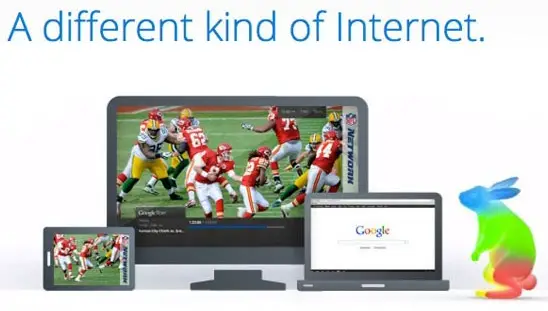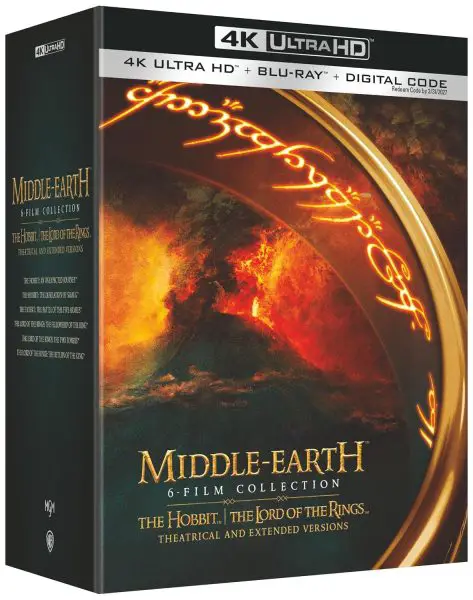
The Age of Google Fiber has arrived. Sounds momentous, doesn’t it? Well, if you’re old enough to remember the difference between the days of dial-up and the coming of broadband, you should have some idea of the difference between so-called “high-speed Internet” and Google Fiber. If you’re not old enough for that, maybe you can remember when you upgraded from your 1 Mbit/s DSL connection to a 10 Mbit/s cable ISP. Multiply that difference ten times, and you might start to see what we’re talking about.
For the time being, Google Fiber is only rolling out to residents of Kansas City (both Kansas Cities, actually), but there’s been plenty of excitement about what this means not only to potential Google Fiber customers, but also to customers of other ISPs (i.e., competition equals innovation and all that). If you’re not excited about Google Fiber, then you probably simply don’t know what it has to offer. Allow this humble tech nerd to explain it as best he can.
The Light of Truth
What is fiber Internet? Well, it’s something like cable or DSL Internet, except that the “wires” are actually slender threads of glass. This means that data is transmitted at the speed of light; well, not exactly but close enough. It also fits into spaces where copper wire would be too big and heavy, and it isn’t subject to rust and corrosion or electromagnetic interference (power lines, lightning, sunspots, microwaves, etcetera). Plus, it wasn’t initially installed several decades ago to do something other than Internet, unlike cable and DSL.
The downside is that it’s pretty expensive and time-consuming to lay the initial infrastructure, but some of this is made up for by the fact that it won’t need anywhere near as much maintenance as copper wires.
The Speed of Light
Apart from Google Fiber, the two other sources of fiber Internet in the U.S. are Verizon and AT&T, both of whom serve a relatively small number of areas; about 1% of the population each. Verizon’s “fiber to the home” FiOS offers a maximum of about 150 Mbit/s, but recently announced that they would soon double it, making it the bandwidth champion before Google Fiber arrived on the scene. AT&T’s U-Verse takes a distant second at 24 Mbit/s, mainly because they use a “fiber to the neighborhood” system which forces the Internet to ride on copper wires from a centralized “node” to each residence in the area.
How fast is Gigabit Internet? Well, Google claims that it’s 100 times faster than the average Internet speed available to most U.S. customers, which would mean that most of us were blazing along at around 10 Mbits per second. As a very rough rule of thumb, real-world Gigabit speeds (accounting for things like network overhead and hardware limitations) give you the bandwidth to download an entire HD movie in about a minute. Whoa.
The Price of Light
Google has announced three tiers. All of them are, frankly, amazing values for what you get, especially compared to what other ISPs have to offer.
● Gigabit+TV (for $120) – This is the top-of-the-line, getting you 1000 Mbit/s bandwidth, 150+ TV channels, the Network Box router, the 2TB Storage Box, the sleek TV Box for direct HDTV integration (for all intents and purposes, an HTPC with Bluetooth capabilities), and even a Nexus 7 tablet to use as a remote control (or as a standalone Android tablet, of course).
● Gigabit Internet (for $70) – You get the same 1000 Mbit/s bandwidth as the top tier, but without the extras. However, you still get the Network Box, which means that you won’t have to shell out for either a modem or a wireless router to go with your Internet service.
● Free Internet (for $0, obviously, although you will need to pay a construction fee, either a one-time cost of $300 or over a year’s time at $25 per month). This will get you the Network Box (yay, free WiFi router too) and Internet service at 5 Mbit/s down, 1 Mbit/s up. Although this is a more or less average speed for residential broadband, Google promises that there will be no other charge for at least seven years, making it the least-expensive broadband in the US, by far.
When Will I See the Light?
Before you get too excited, keep in mind that Google has not yet finished laying the fiber infrastructure in Kansas City, and the number of qualifying neighborhoods is still very small (20% to be precise, with few if any subscribers actually connected at the time of this writing). Specific parts of Kansas City, KS and Kansas City, MO, will get fiber first, followed by more outlying areas such as North and South Kansas City, MO. And all of this will take us through 2012 and into 2013.
After this, we have no concrete assurance that Google Fiber will come to any other area, so predicting the next stop is little more than wild speculation. On top of that, very few people could have expected Google to begin with Kansas City in the first place. Therefore, the next recipients could literally be the last place you might guess. And nobody, not even Google themselves, will know anything more until sometime next year.
Holding other ISPs Up to the Light
Google Fiber is an ambitious undertaking, not simply for the logistics of laying fiber and establishing service, but also for the fact that Google is getting into the ISP game. The company is by no means uncomfortable with physical hardware; in fact, Google has tried their hand at any number of IRL projects from robot cars to mobile devices (including the Nexus 7, which comes “free” with the Gigabit+TV tier of their fiber service).
However, Google has no experience with being a service provider in the “real world” sense, and some critics wonder if their customer service skills are or will be up to the task for Kansas City, let alone on a national scope.
Whatever happens, there’s little doubt that competitors, both Internet and TV providers alike, will be looking very closely at Google Fiber. Most providers have a virtual monopoly in their area, so any competition will probably improve the level of service that the average consumer can expect. At the simplest level, no other ISP can claim the sheer bandwidth that Google Fiber offers, so expect to see ISPs looking for ways to increase their speeds (as we’ve seen, FiOS is a good example). Secondly, no ISP can boast the bandwidth per dollar cost of any of Google Fiber’s tiers, so expect to see Internet services become more affordable.
In the end, the most important effect of the project may not be the service that Google themselves will provide, but the overall potential for improvement in everyone’s service. Either way, I’m excited — how about you?
Stephanie Cable is a tech geek from Salt Lake City and writes entertainment articles for CableTV.com.













Compare all directv services and Bundle Offers and Plans.
Also see the money-saving promos, coupons and deals from DIRECTV.